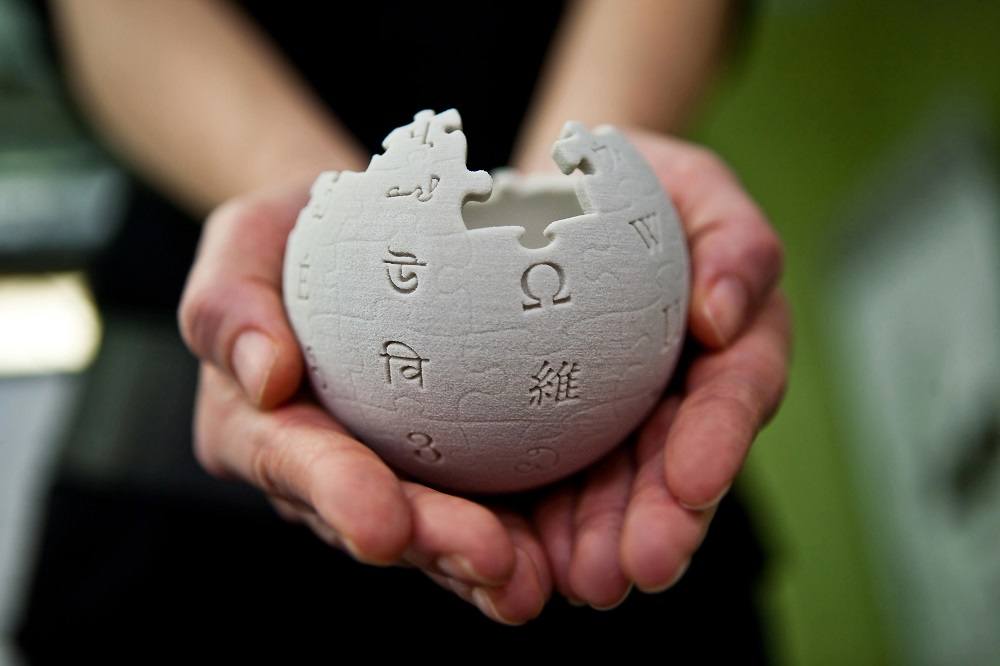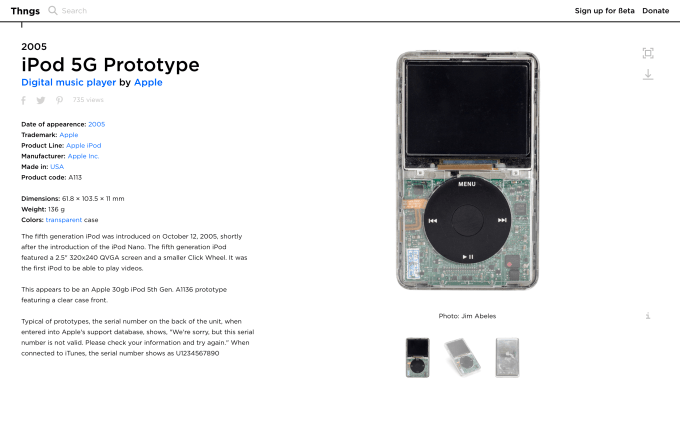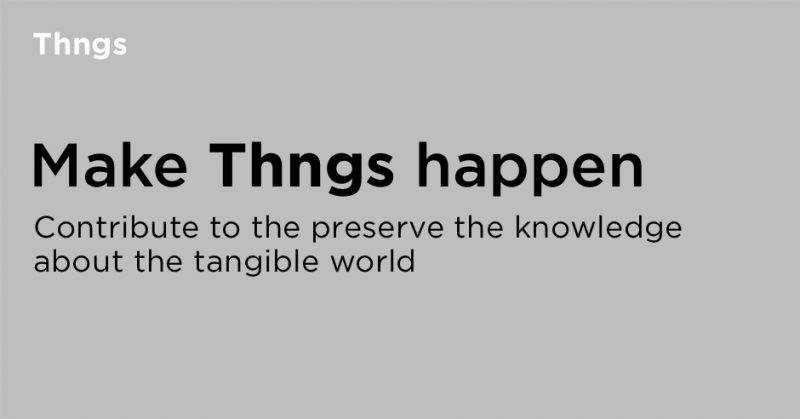
Want to know more about something? Whippersnappers today have it good. There are basically just two sites to call on, Google and Wikipedia. Well, Google just leads you and Wikipedia tells you. Well, not everything is on Wikipedia. Sometimes, not in Google either. Not every—thing. But soon there might be a place where every physical object, every tiny knick-knack ever created (in public domain at least) will be defined and described to some extent. Welcome to Thngs.
Yes. Thngs, or https://thngs.co/. Thngs describes itself as the Noah’s Ark for the tangible world. It’s a Russian-based startup that aims to preserve physical objects through images and descriptions. Tons of man-made objects have been made and lost (significant or not) through the ravages of time and neglect. Many of which we now find in museums and private collections. Though Wikipedia has millions of articles, including millions of objects plus sponsored articles on products like vehicles and electronics, not everything is in there as there are millions more.
“Thngs is a place for every thing to collect and share information about physical objects — Thngs… We made it easy and comfortable to discover, share and save information about things. The service allows museums, collectors, brands and producers to reach out to their audiences, giving almost the same experience in physical dimension”.
— Dima Dewinn, CEO, Thngs
It’s quite a novel project and a pretty huge undertaking without the help of millions of users. This endeavor will likely require Wikipedia-level effort, that is, if this endeavor gets plenty exposure it needs to take off. If not, Thngs will need plenty of sponsors for it to expand its library and continue its work.
“We had a couple of meetings with Russian investors, although Russian investor is a myth itself as a typology… We were told that there is no way we could build such a complex service, and even if we have, we wouldn’t make any money. US VC funds told us that the service is great, but we need to move to US to develop it.”
Where would funding for Thngs possibly come from? Museums are a great place to start. For every object they have in exhibit, they have a hundred more kept in storage, unseen by Wikipedia and other Wiki contributors. So do private collectors for toys, comics, jewelry, medieval weapons and many other objects you’ll see in History Channel shows like Pickers, Pawn Stars and Storage Wars. Manufacturers and makers will also benefit from Thngs as every product, every model, however obscure and every important component will be preserved (and at the same time promoted) for posterity.
For example, even though Nokia’s phones are featured in Wikipedia, not every model is covered nor would every model be pictured in all angles, even the prototypes. There are obscure models of mobile phones that people have interest and fond memories of but are not given justice unless those people themselves contribute in an academic fashion. Thngs has the potential to show them all. Did you even know that Nintendo sold ceiling fans? Or how about the possibility of seeing every Transformers toy every made? Not there yet but wouldn’t that be cool?
“The physical preservation of all things is not possible, but we can preserve information about them. We made Thngs as a Wikipedia for physical objects, where each thing has its own page with metadata, images and files, that anyone can edit. We aim to develop a tool to discover, collect and get things. A Noah’s ark for the material world,”
— Dima Dewinn, CEO, Thngs
The site is currently on Beta but there are already plenty of pretty interesting stuff on exhibit. Despite being a Russian startup, the site is in English and in honor of mother Russia and her achievements, the first object you’ll see is the Sputnik-1 satellite. Thngs presents every object starting with the name, the date of first appearance, the manufacturer, country of origin, dimensions and descriptions. The images are shown clearly and in every angle if possible. Companies and museums who want in on the project can have their images in high quality or rendered in 360 degrees. Though the images onsite can be seen they won’t be free as Thngs is partnering with Getty Images and gain access to its clients and re-sell their 360 images and 3D models.
As mentioned, the site is still in beta but already looks interesting. It looks simple and if you want to look something up, there’s a search bar at the top. With the right key words, you might find the thing that you’re looking for.



